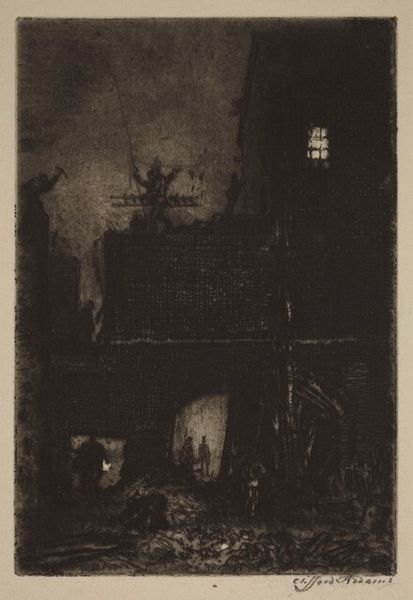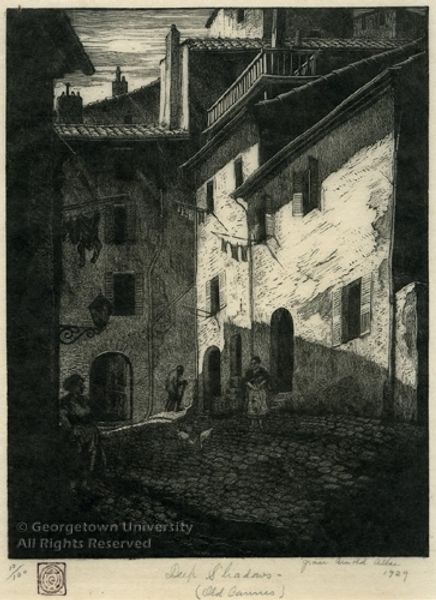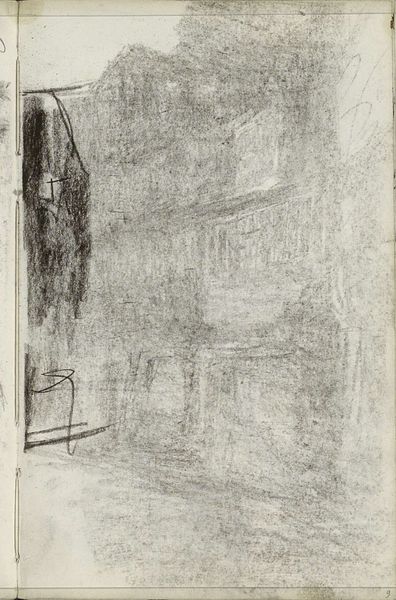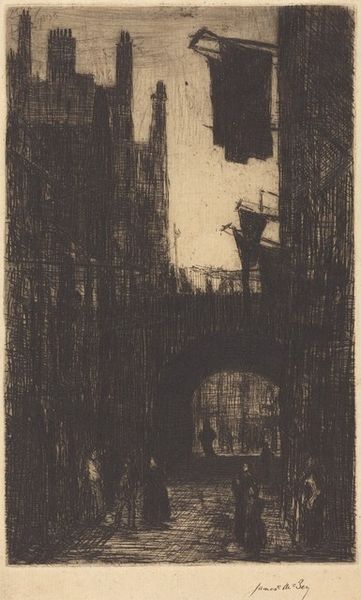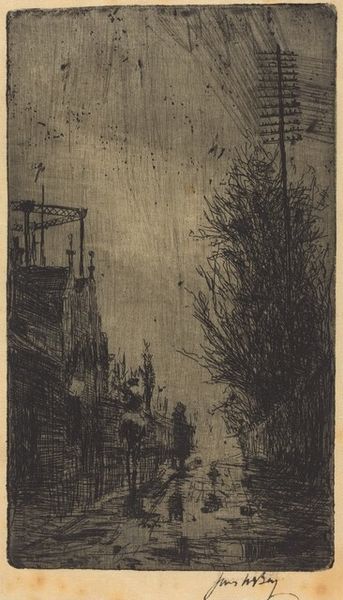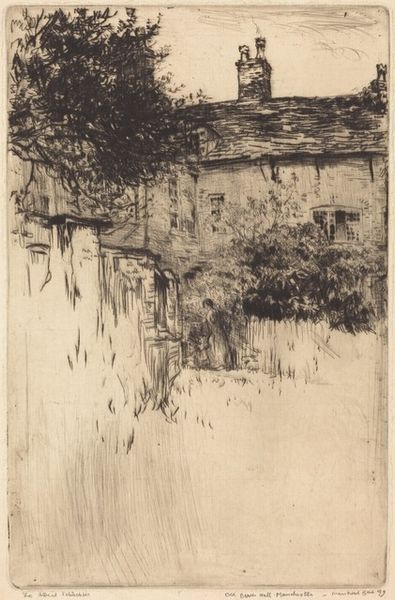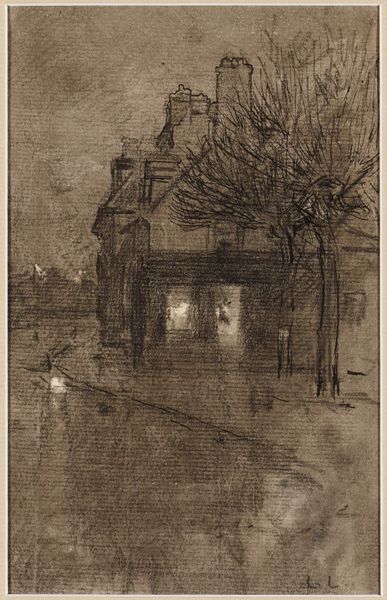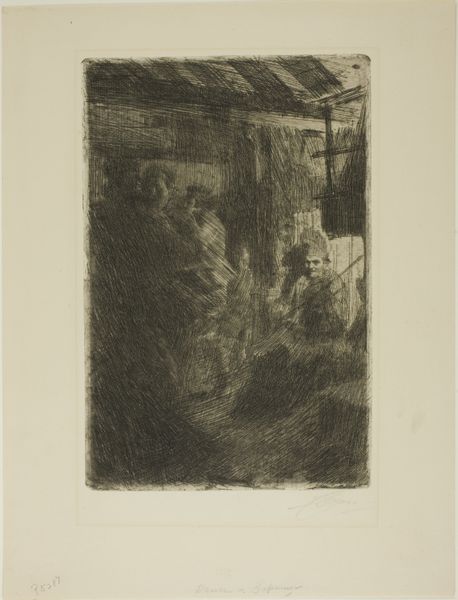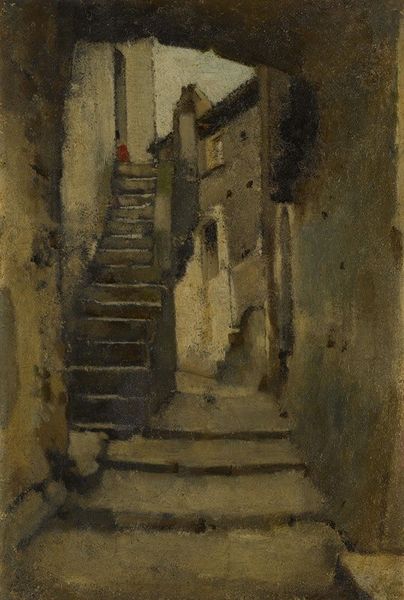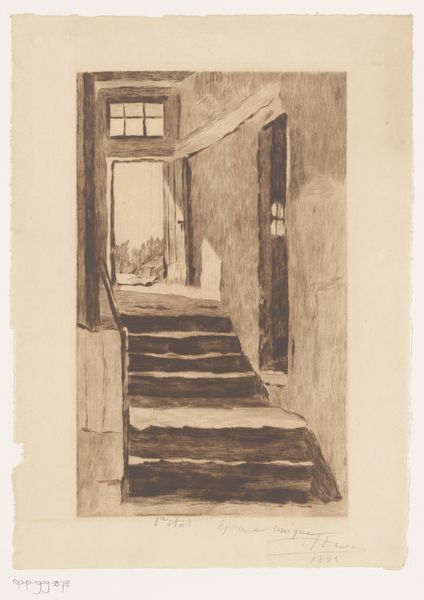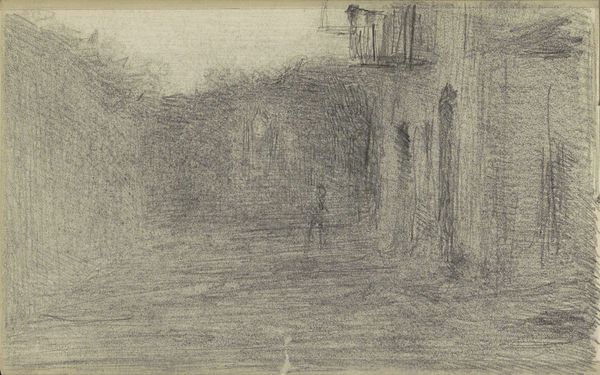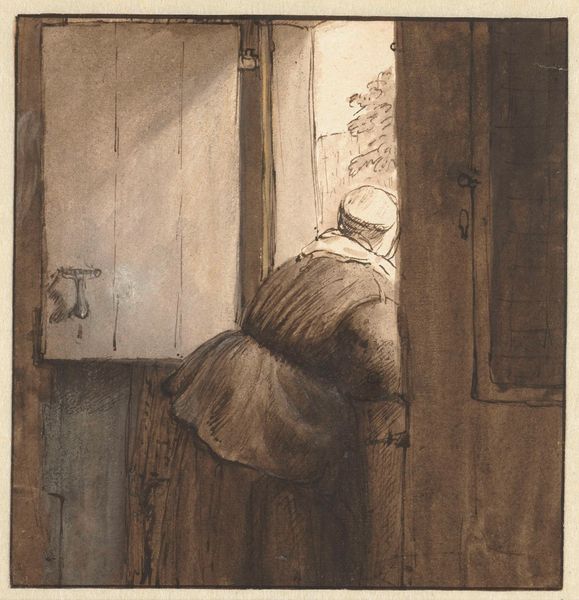
drawing, watercolor
#
pencil drawn
#
drawing
#
landscape
#
charcoal drawing
#
watercolor
#
expressionism
#
symbolism
#
watercolour illustration
#
watercolor
Dimensions: sheet: 24.77 × 15.56 cm (9 3/4 × 6 1/8 in.)
Copyright: National Gallery of Art: CC0 1.0
Editor: Munch’s “Night Mood, Scene from Nordstrand”, created in 1890 using watercolor and pencil, strikes me with its almost eerie stillness. There's something unsettling in the juxtaposition of the darkened house and the figure silhouetted against what seems to be a window. How do you interpret this work? Curator: As a materialist, I'm drawn to the process. Munch’s deliberate use of watercolor and pencil—materials readily available and often associated with preliminary sketches—elevates the medium. It makes you consider artistic labor. This piece rejects the slick, finished product often prized by the academy. Is Munch suggesting that the 'mood' isn't just the subject, but inherent in the raw materiality itself? Editor: That's interesting. So, the materials and the technique used are integral to understanding the overall emotional impact? Curator: Exactly. The hazy washes of watercolor evoke the damp air of Nordstrand, the quick, repetitive strokes hinting at a frenetic energy barely contained. Think about how the economic status of an artist might affect material choices. This wasn’t oil paint destined for a wealthy patron. It’s arguably a more direct, and perhaps even democratic, engagement with his subject. It removes pretense. Editor: I hadn’t considered the social context of the materials themselves. So the apparent "unfinished" quality... Curator: ... speaks volumes. What statement might Munch be making about the art market or consumption during this period? The work almost resists becoming a commodity. Editor: I'm starting to see how the deliberate choice of these readily available materials, combined with the quick, almost frenzied, application, pushes against traditional notions of high art. It offers a different lens to view the scene and Munch's artistic intentions. Thank you! Curator: Absolutely. Thinking about art through its materiality opens up possibilities. There are narratives beyond just aesthetics, or the artist's perceived emotion, or even individual creative 'genius'. It asks us to consider a piece's place in the social and economic world.
Comments
No comments
Be the first to comment and join the conversation on the ultimate creative platform.
